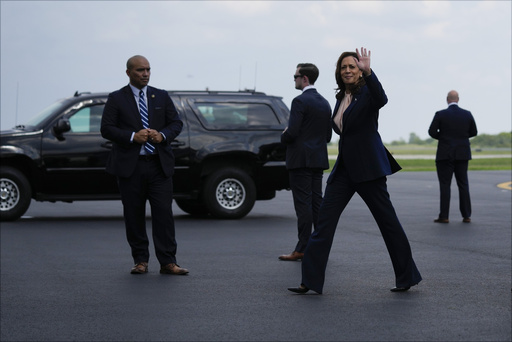The upcoming presidential campaign is expected to unfold with a 90-day sprint focusing on the Rust Belt and the Sun Belt regions. Vice President Kamala Harris, the Democratic presidential nominee, selected a Midwestern governor as her running mate to bolster support in key “Blue Wall” states such as Wisconsin, Michigan, and Pennsylvania, crucial for Democrats to secure the White House. Additionally, Harris intends to compete in Sun Belt states like Georgia, Arizona, Nevada, and North Carolina, which have become increasingly important battlegrounds.
With Harris being the first Black woman and woman of South Asian descent to lead a major party ticket, and former President Donald Trump being the Republican nominee, both candidates will be vying for victory in the Sun Belt states, particularly Georgia, Arizona, Nevada, and North Carolina. Harris’s nomination has energized supporters across racial and generational lines, prompting both Republicans and Democrats to adjust their campaign strategies and redraw battle lines.
The addition of Minnesota Governor Tim Walz as Harris’s running mate brings a Rust Belt perspective to the Democratic ticket. Walz, a 60-year-old Army National Guard veteran, teacher, and former football coach, offers appeal in regions where Democrats traditionally struggle. Meanwhile, Trump’s campaign response suggests they will maintain their preexisting arguments against Harris and Walz.
The 2020 election dynamics shifted as Biden exited the race and endorsed Harris, leading to significant fundraising, volunteer support, and delegate commitments for Harris. The campaign fronts differ in demographics, with the Rust Belt states and Pennsylvania having older, whiter populations, while Sun Belt states like Arizona and Georgia have younger electorates and larger minority populations.
Sun Belt states have experienced faster growth and attract newcomers due to business opportunities and retirement options, with larger Hispanic populations. These states also have significant Black and Asian American populations, contributing to their diverse demographic makeup compared to the Rust Belt. Harris’s choice of running mate reflects an understanding of the diverse battleground map, aiming to build a coalition that represents a wide range of voters.
Overall, Harris’s selection of a running mate and the strategic positioning in key battleground states highlight the opportunities her candidacy presents, especially in states where Biden faced challenges. The upcoming election is set to be a contentious battle as both campaigns seek to secure crucial electoral votes.


